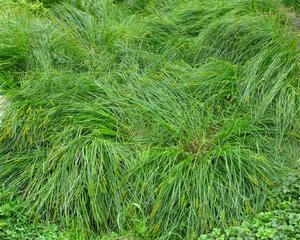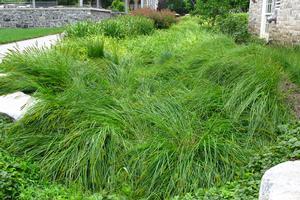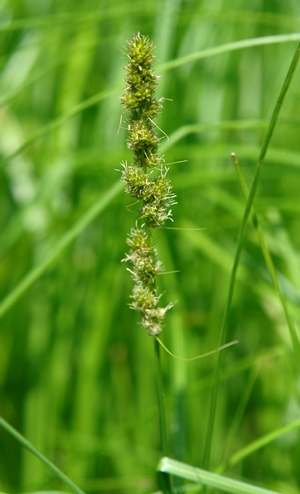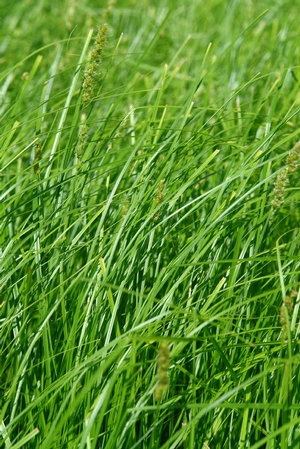Carex vulpinoidea
Common: fox sedgeCarex vulpinoidea LP50 - 50 per flat
- Height: 1'-3'
- Spread: 6"-24"
- Spacing: 12"
- Hardiness Zone(s): 3-7


Carex vulpinoidea LP50 - 50 per flat



One of the most widespread species of Carex in North America, growing in wet meadows, prairies, swamps and marshes. The seedheads mature in late summer and resemble fox tails, hence the common name.
Grows in moist to wet soils in full to part sun. Propagate by division of clumps every few years. Cut foliage to the ground in early spring before new growth occurs. Use as a border to ponds and along streambanks as a groundcover.
One of the most widespread species of Carex in North America, Carex vulpinoidea grows in wet meadows, prairies, swamps and marshes. The seedheads mature in late summer and resemble fox tails, hence the common name of fox sedge. A great colonizer for wetland restoration projects or for erosion control along banks of ponds, streams, or springs, Carex vulpinodea naturalizes quickly where it is planted. It grows 1’-3’ tall with narrow grass-like leaves in deep green and forms clumps.
Fox sedge grows in moist to wet soils in full to part sun. Commonly found near other plant genera like Juncus, Eupatorium, Iris, Scirpus, Vernonia, and Asclepias incarnata, Carex vulpinoidea is a dominant sedge in sedge meadows.
Compared to Carex stricta or Carex emoryi, fox sedge forms clumps and doesn’t run by rhizome. It can be quite weedy and aggressive, like Carex stricta and Carex emoryi, but we find that to be one of its attributes—allowing for a native plant to effectively colonize an area and outcompete non-native weed pressure. Fox sedge is a great plant for creating habitat along a water’s edge, forage for water fowl like Mallard ducks, and providing food for birds and insects.